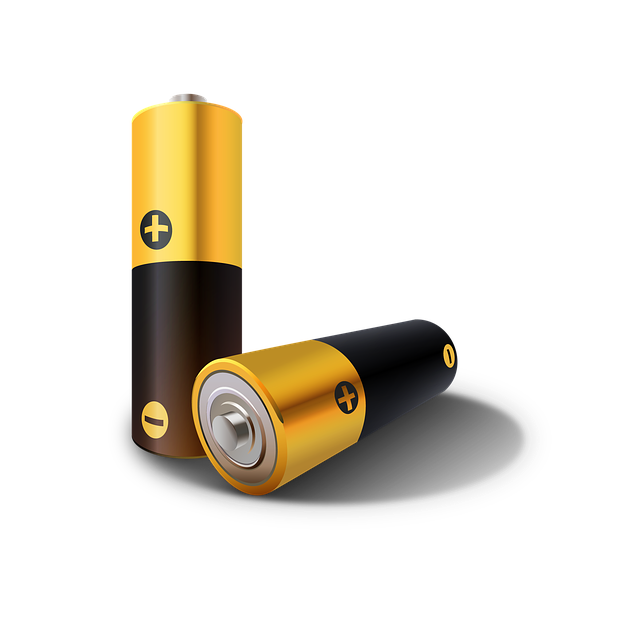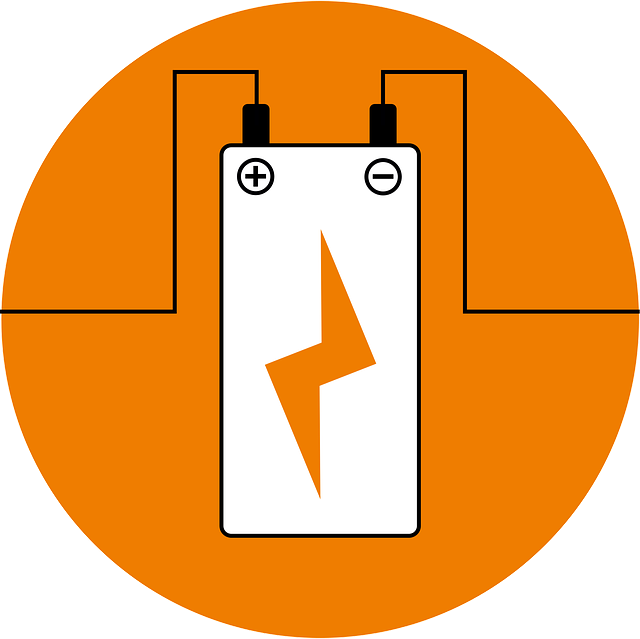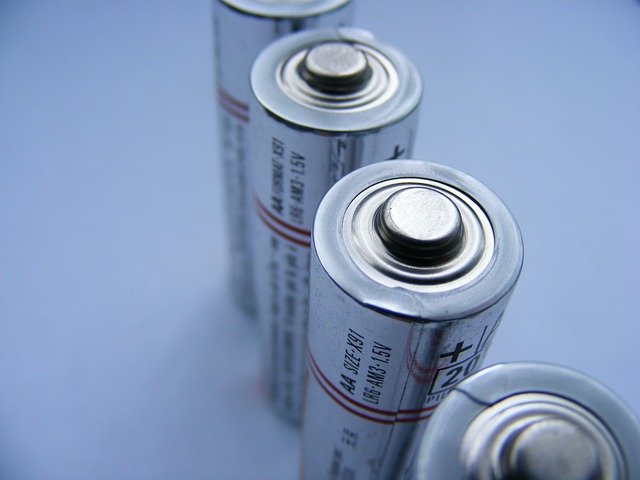A battery is a self-contained, chemical strength % that could produce a constrained quantity of electric energy any place it is needed. Unlike normal electricity, which flows to your house via wires that start out in a strength plant, a battery slowly converts chemicals packed internally into electric energy, commonly launched over a duration of days, weeks, months, or maybe years.
Batteries have 3 parts, an associate degree anode (-), a cathode (+), and an electrolyte. The cathode and anode (the positive and negative sides at either finish of a conventional battery) are connected to an electrical circuit.
Anatomy of a battery.
Most batteries include 3 primary parts: electrodes, an electrolyte, and a separator, a Michigan primarily based totally battery generation begin up.
There are electrodes in each battery. Both are fabricated from conductive substances, however, they serve distinct roles. One electrode, referred to as the cathode, connects to the tremendous stop of the battery and is in which the contemporary electric leaves (or electrons enter) the battery at some stage in discharge, that is whilst the battery is getting used to strength something. The different electrode, referred to as the anode, connects to the bad stop of the battery and is in which the contemporary electricity enters (or electrons leave) the battery at some stage in discharge.

Between those electrodes, in addition to the inner them, is the electrolyte. This liquid or gel-like substance includes electrically charged particles or ions. The ions integrate with the substances that make up the electrodes, generating chemical reactions that permit a battery to generate an electric-powered contemporary. The very last part of the battery, the separator, is reasonably straightforward. The separator’s position is to maintain the anode and the cathode separated from every difference in the battery. Without a separator, the 2 electrodes could come into contact, which could create a quick circuit and save the battery from operating properly, explained
How does it work?
how a battery works, Imagine yourself placing alkaline batteries, like double AAs, right into a flashlight. When you positioned the one’s batteries into the flashlight after which flip it on, what you are genuinely doing is finishing a circuit. The saved chemical power withinside the battery converts to electric power, which travels out of the battery and into the bottom of the flashlight’s bulb, inflicting it to mild up. Then, the electrical cutting-edge re-enters the battery, however at the alternative cease from in which it got here out originally.
All of the elements of the battery paintings collectively make the flashlight mild up. The electrodes withinside the battery comprise atoms of positive undertaking materials. For instance, in an alkaline battery, the anode is commonly made from zinc, and manganese dioxide acts because of the cathode. And the electrolyte among and inner the one’s electrodes incorporates ions. When those ions join up with the electrodes’ atoms, positive electrochemical reactions take region among the ions and the electrodes’ atoms.
The collection of chemical reactions that happens withinside the electrodes is together referred to as oxidation-reduction (redox) reactions. In a battery, the cathode is referred to as the oxidizing agent as it accepts electrons from the anode. The anode is referred to as the lowering agent, as it loses electrons.

Types of Batteries.
Batteries are available in all unique shapes, sizes, voltages, and capacities (quantities of saved price or energy). Although they may be made with all styles of unique chemical electrolytes and electrodes, there are definitely handiest foremost types: number one and secondary. Primary batteries are ordinary, disposable ones that can not commonly be recharged; secondary batteries may be recharged, from time to time masses of times. You can recharge secondary batteries simply via way of means of passing a contemporary via them withinside the contrary path to which it’d commonly flow (while it is discharging); you can not commonly do that with number one batteries. When you price your cellphone, you’re definitely simply jogging the battery (and the chemical reactions interior it) in reverse. the followings are some types of batteries, Primary batteries, Zinc-carbon, Alkaline, Button batteries, Secondary batteries (rechargeables), Lead-acid, Nickel-cadmium, Nickel-metal-hydride (NiMH), Lithium-ion, and Fuel cells.
Primary Batteries.
- Zinc-carbon: The cheapest, regular, ordinary batteries you get for such things as flashlights are zinc carbon ones. Disposable zinc-carbon batteries date again to approximately 1865 after they had been invented by French engineer Georges Leclanché; it really is why they are from time to time known as Leclanché cells. Although they are inexpensive, they do not shop that tons of electricity or ultimate that long. “Zinc-carbon” is basically an outline of the way the battery is made: the wonderful electrode is crafted from a carbon rod surrounded by powdered carbon and manganese (IV) oxide; the poor electrode (the outer case) is a zinc alloy, and the electrolyte is a paste of ammonium chloride. When a zinc-carbon battery is stressed out right into a circuit, exclusive reactions occur at the 2 electrodes. At the poor electrode, zinc is transformed into zinc ions and electrons, which offer strength to the circuit. At the wonderful electrode, manganese (IV) oxide turns to manganese (III) oxide and ammonia.
- Alkaline: Alkaline batteries appear tons similar to zinc carbon ones, however, they percent a greater punch: they shop for greater electricity and ultimate longer, that’s why they fee greater. They live charged for numerous years, which makes them a completely reliable supply of strength. Although they appear precisely similar to zinc carbon ones, they use exclusive chemical substances and exclusive reactions take region internal them. The wonderful electrode is primarily based totally on manganese (IV) oxide and the poor electrode is fabricated from zinc, however, the electrolyte is a focused alkaline solution (potassium hydroxide). Power is produced thru chemical reactions. At the wonderful electrode, manganese (IV) oxide is transformed into manganese (III) oxide and hydroxyl ions. At the poor electrode, zinc reacts with the hydroxyl ions to launch the electrons that strengthen the circuit.
- Button batteries: Many button-molecular batteries (extensively utilized in such things as quartz watches and listening to aids) paintings in an equal manner as regular alkalines, with comparable electrode substances and alkaline electrolytes; others use lithium and natural electrolytes and paintings thru exclusive chemical reactions. Look intently at a button molecular and you may see that the pinnacle critical segment paperwork the poor electrode, that’s crafted from both zinc and lithium. The outer case and backside shape the wonderful electrode, commonly crafted from manganese oxide, silver oxide, or copper oxide. Once, button batteries usually used mercury oxide and graphite because they are wonderful electrodes, however, mercury is poisonous so it is now in large part been withdrawn from batteries.

Secondary Batteries.
- Lead-acid: Tried, tested, and trusted, lead-acid batteries had been with us because of the center of the nineteenth century. With a normal score of 12 volts, they’ve six separate cells, every generating 2 volts. Crudely decreased to its simple components, every molecule has a “spongy” lead metallic electrode (negative), a lead dioxide electrode (positive), and a sulfuric acid electrolyte. As the battery discharges, each electrode grows to be covered with lead sulfate, and the sulfuric acid is basically transformed into water, at the same time as electrons waft out across the outside circuit to offer strength.
Lead-acid batteries made it viable to begin vehicles without the assistance of a risky and grimy hand crank. Normally, you in no way should recharge them—due to the fact your automobile does that automatically.
- Nickel-cadmium: Nickel-cadmium (NiCd, pronounced “nicad”) is extensively used as a replacement for disposable 1.5-volt batteries in such things as toys, flashlights, and strong tools. They’re particularly cheap, may be charged and discharged masses of instances, and, well treated, will ultimately approximately a decade. Although very dependable, it is frequently stated that NiCd batteries want to be discharged absolutely earlier than you fee them up or the quantity of fee they may shop (and their powerful lifespan) may be substantially decreased. Opinions range on whether or not that is actual and, if so, why it happens, however typically of thumb, frequently discharging batteries absolutely after which recharging them is a superb practice. Another hassle with NiCd batteries is the poisonous cadmium metallic they contain. If they’re buried in a landfill, as opposed to well recycled, the cadmium can get away into the soil and will potentially pollute watercourses nearby.
- Nickel-metallic-hydride (NiMH): Nickel metallic hydride batteries paintings in a comparable way, however, go through much less of the so-known “reminiscence effect.” They have become a famous opportunity for NiCd batteries withinside the 1990s, partially due to environmental worries approximately cadmium. NiMH batteries paint greater efficiently in devices like cellphones, which are frequently “topped-up” with a brief recharge as opposed to a whole discharge and recharge (that is greater regular with something like strength tools).
- Lithium-ion: Lithium-ion batteries are the fastest-developing form of rechargeables; there are probable lithium-ion batteries in your molecular phone, MP3 player, and laptop computer. What’s so properly approximately lithium? It’s a lightweight metal that without difficulty paperwork ions, so it is tremendous for making batteries. The cutting-edge lithium-ion batteries can shop approximately two times as lots power as conventional NiCd rechargeables, paintings at better voltages, and are greater environmentally friendly, however, do not ultimate as long. Even so, they may be charged and discharged masses of instances and usually ultimate numerous years, so they are awesome for normal use in digital devices that are not intended to ultimate that long.
- Fuel cells: These are not surely batteries at all, even though they are comparable inasmuch as they produce electric power via chemical reactions. You can discover greater approximately them in our separate article on gasoline cells.
